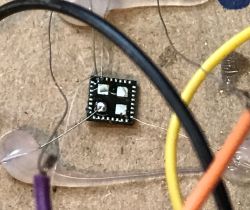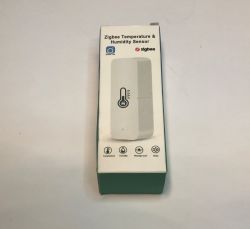FAQ
TL;DR: For Tuya BK7252 doorbells, reliable backups/flashing work over CH341A SPI; one unit needed 398 attempts — “Today this look 398 attempts.” Run the Python helper, then read/write with NeoProgrammer. [Elektroda, divadiow, post #21512355]
Why it matters: This FAQ helps hardware tinkerers back up, unbrick, or experiment with BK7252-based Tuya doorbells without losing factory firmware.
Quick Facts
- Core silicon: Beken BK7252 (QFN68); on-board flash XTX XT25F32B 4 MiB, JEDEC 0B 40 16. [Elektroda, divadiow, post #21213265]
- Exposed pins: UART2_TX for logs; P10 UART1_RX and P11 UART1_TX for flashing. [Elektroda, divadiow, post #21213265]
- SPI wiring used here: CE→CH341 D2, TCK→SCK, TMS→CS0, TDI→MOSI, TDO→MISO; set CH341 jumper to I2C. [Elektroda, divadiow, post #21512355]
- Tuya OTA scheme: ping‑pang dual partitions, app1 at 0x11000 and app2 at 0x1BA000; bootloader skips RBL. [Elektroda, insmod, post #21513232]
- No full drop-in replacement firmware for BK7252U doorbells yet; keep a full backup. [Elektroda, divadiow, post #21578866]
What chipset and flash are inside this Tuya doorbell?
It uses a Beken BK7252 (QFN68). The SPI flash is XTX XT25F32B, 4 MiB capacity, with JEDEC ID 0B 40 16. The PCB exposes well-labeled test pads for UART and JTAG/SPI access. Photos and a full boot log confirm the platform and memory. This baseline helps you choose the right flasher, offsets, and OTA expectations. [Elektroda, divadiow, post #21213265]
Which UART pins should I use for logs and flashing?
Use UART2_TX for boot logs. Use P10 (UART1_RX) and P11 (UART1_TX) for flashing and backups. The thread identifies both UART sets on the test pads. Keep wires short and solidly soldered or use quality pogo pins to reduce noise during high-baud transfers. [Elektroda, divadiow, post #21213265]
How do I enter BK7252 SPI mode and dump flash with a CH341A?
Three steps:
- Put CH341A in I2C mode; wire pads: CE→D2, TCK→SCK, TMS→CS0, TDI→MOSI, TDO→MISO.
- Run the provided Python wrapper to toggle CEN and enter SPI; wait for the 0x9F ID pattern.
- Once in SPI mode, use NeoProgrammer to detect and read/erase/program the flash. [Elektroda, divadiow, post #21512355]
How long can entering SPI mode take on BK7252?
It can be slow. One capture needed 398 attempts before the expected SPI response appeared. As the author noted, “Today this look 398 attempts.” If retries take long, adjust timing and ensure stable CE control from CH341A GPIO2. [Elektroda, divadiow, post #21512355]
Which tools should I use once the chip is in SPI mode?
Use NeoProgrammer to auto-detect the flash and perform read/erase/program. The helper Python executable only handles the SPI-mode entry and basic JEDEC read; NeoProgrammer handles the actual dump and writes after that. Keep the wiring from the CH341A short and shielded. [Elektroda, divadiow, post #21512355]
Does BK7231GUIFlashTool support BK7252 over UART?
Yes. BK7252 support was added in the tool. Quoting the maintainer: “BK7252 is like BK7231T but without ‘wrap around 2MB’ hack … read/write just skips bootloader (0x11000 offset).” Use the new BK7252 mode and follow the tutorial notes. [Elektroda, p.kaczmarek2, post #21525243]
Why does Easy UART Flasher sometimes fail on this doorbell?
Some boards block or disturb T/N mode. The author could not back up this unit with Easy UART Flasher in T or N mode, and BKFIL did not recognize BK7252. When that happens, switch to the SPI method described above. [Elektroda, divadiow, post #21213265]
Is there an alternate UART method I can try if the normal one fails?
Yes. Use the hid_download_py method from the linked tutorial. It can succeed where standard UART bootstrap fails. Follow the steps carefully and confirm your USB‑UART (e.g., FT232R) and wiring quality before retries. [Elektroda, p.kaczmarek2, post #21526049]
What does a successful BK7252 UART dump look like?
One successful session started at 0x11000, read 495 sectors, verified CRC 0x64E354DE, and produced 2,027,520 bytes. Using an FT232R improved reliability in that case. Save the output and verify CRC before proceeding with any erase or write. [Elektroda, divadiow, post #21526057]
How does Tuya OTA work on BK7252?
It uses a ping‑pang (dual app) layout. Bootloader partitions are app1 at 0x11000 and app2 at 0x1BA000. The standard Tuya bootloader doesn’t use RBL; it toggles between these partitions. Package metadata matches that dual scheme. [Elektroda, insmod, post #21513232]
Why didn’t an OpenBK OTA persist after reboot?
Logs showed the OTA copy then a reboot, but the bootloader reported FAL partition table not found and jumped to 0x10000. This aligns with Tuya’s dual-partition scheme rather than OpenBK’s RBL approach. [Elektroda, divadiow, post #21514822]
Can I flash OpenBK7252 on this doorbell today?
You can experiment, but there is no fully-functioning, cloud‑free replacement yet for BK7252U doorbells. As the author cautioned, “there is no fully-functioning replacement firmware for BK7252U.” Always keep a verified full backup first. [Elektroda, divadiow, post #21578866]
Why won’t OpenBK7252_Tuya_QIO at 0x0 boot on this unit?
On this doorbell, the Tuya QIO image at 0x0 did not boot until a compatible bootloader was spliced in. Tuya’s BL and partitioning expectations differ, so include the matching BL if you test. [Elektroda, divadiow, post #21617297]
Should I back up the full 4 MB including the bootloader?
Yes. Keep a complete 4 MB dump that includes the bootloader, so you can restore factory behavior if needed. This is especially important while experimenting with OpenBK or custom builds. [Elektroda, divadiow, post #21578866]
Where can I get BK7252 Tuya SDKs for reference?
Multiple Tuya BK7252 SDK zip releases were shared (1.1.10 through 1.1.23). Use them to study partitioning, OTA handling, and drivers before attempting custom builds. [Elektroda, divadiow, post #21499790]
My logs show SD timeouts and "no sdcard"—is something broken?
No, that’s expected without a card. The boot log repeats CMD8 timeouts and reports “no sdcard,” then continues. Insert a supported microSD if you need on-device recording. The device boots and operates without it. [Elektroda, divadiow, post #21213265]







